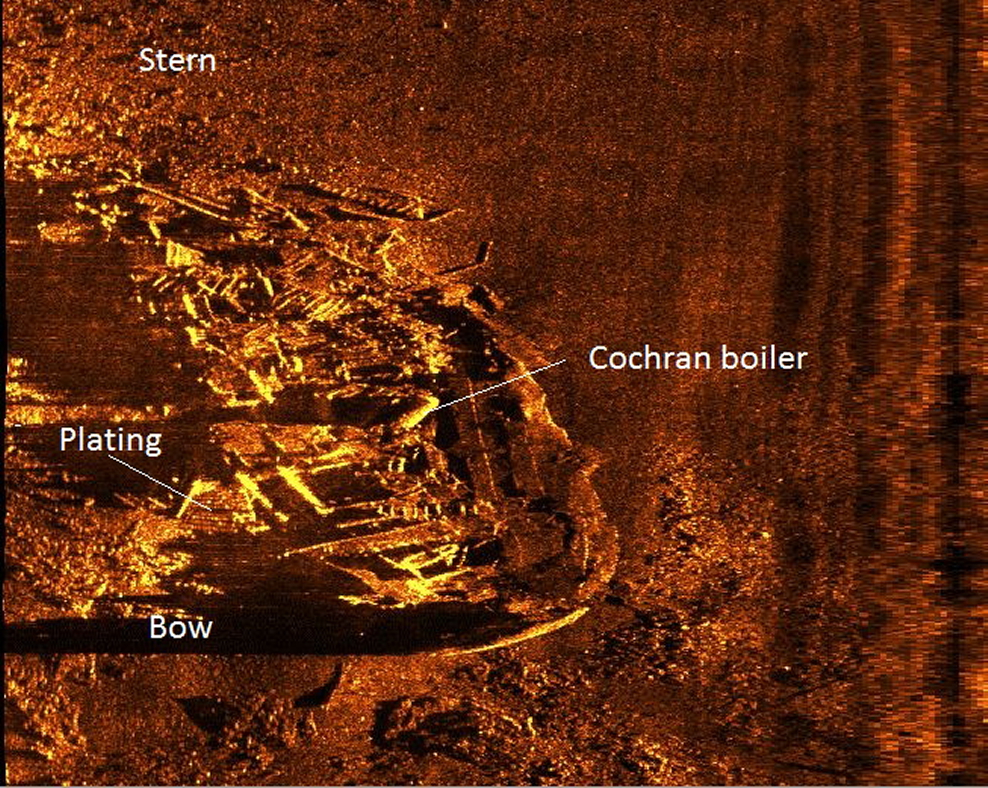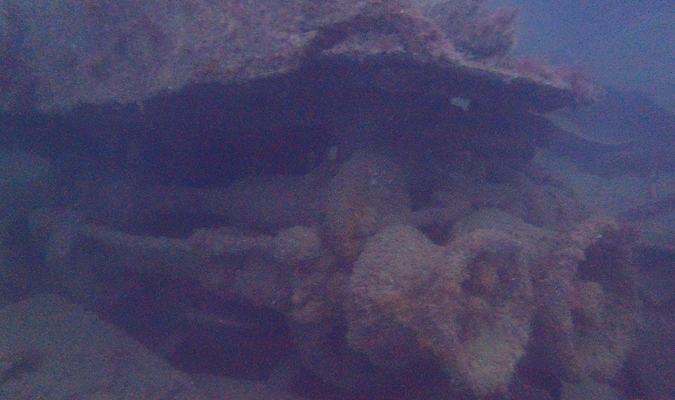SS Rosewood
The following presents new data collected as part of a recent Historic Scotland funded project – the Scapa Flow 2013 Marine Archaeology Survey – which aimed to assess the extent and condition of some of the sites around Scapa Flow.
Vessel History
A British steel steamship, the SS Rosewood was built in 1889 as the SS Blakemore by Readhead John and Sons Ltd, South Shields for W Runciman and Co., South Shields. Purchased by North Moor Steamships Ltd. In 1898 she was sold again in 1899 to W. Constantine, South Shields, where she served for a further two years. Se was bought by Constantine & Pickering SS. Co., South Shields in 1901 and was renamed as SS Rosewood. She was requisitioned by the Admiralty in 1914 and was to be sunk as a blockship in Skerry Sound on 18th September 1914. The firing charges used to scuttle her failed and the Rosewood drifted to the west, sinking southwest of Lambs Holm where she was of no use as a blockship.
Admiralty documents available from the Public Records Office at Kew (file ADM X96-3) show some discrepancy in the identity of the blockship sunk in this location. The sketch maps and descriptions of the blockships that are based on the Admiralty document ADM1-8428-216 of Skerry Sound mis-assign the positions and descriptions of SS Rosewood and SS Teeswood. These reports contradict the 1915 sketch of the Skerry Sound blockships which clearly show a wreck named “Teeswood” in the location of SS Rosewood as described on the map and associated text.
Although it was not possible to determine the identity of the remains from the site of the SS Rosewood, a two cylinder compound engine – which the Lloyds report confirms the SS Teeswood was built with – was found on the site of the Teeswood. If the wreck at this site has been the SS Rosewood (as indicated in the admiralty documents) we would have expected to find a triple expansion engine.
The Scapa Flow 2013 Marine Archaeology survey has shown that the remains of the SS Rosewood are still extensive, despite subsequent salvage activities, which likely account for the absence of key machinery such as boilers, engine, and propeller. This contrary to the results of previous surveys – the 1972 survey completed by Undermarine Operations reported that the SS Rosewood had been “blasted flat” and that there was “no sign of the hull except towards stern and bows”; wile the Fathoms multibeam survey completed in 2010 recorded no wreckage at all.
The site makes and interesting dive, but is best accessed by boat.
Diver Surveys
The wreck lies on stone and sand bottom in about 10m of water. Very broken up, but standing proud of the seabed, there are numerous sections of steel plating and ribs were across the site. The bow is the most intact section with the stem post standing about 5m proud of the seabed. Close to the bow, the anchor winch, anchor chain, capstan drum and chain locker can be seen. There are two large Admiralty style anchors at the bow, which may have been intended for use as part of the scuttling to ensure she stayed in place. Steamships like the SS Rosewood traditionally used Danforth style anchors.
Although much of the key machinery has been salvaged, there a Cochran boiler can still be seen midships in the area of the engine room. This would have been used as a donkey boiler to manoeuver when the vessel was in harbour.
Side Scan Data
The side scan image confirms that the Rosewood has broken down in the confines of her original dimensions, showing the wreck to be 80m long by 11m beam. The remains are oriented southwest to northeast with the bow to the southwest. The bow is the highest point of the vessel standing about 5m proud of the seabed while the midships and stern sections appear more broken down. The Cochran boiler is clearly indicated

















